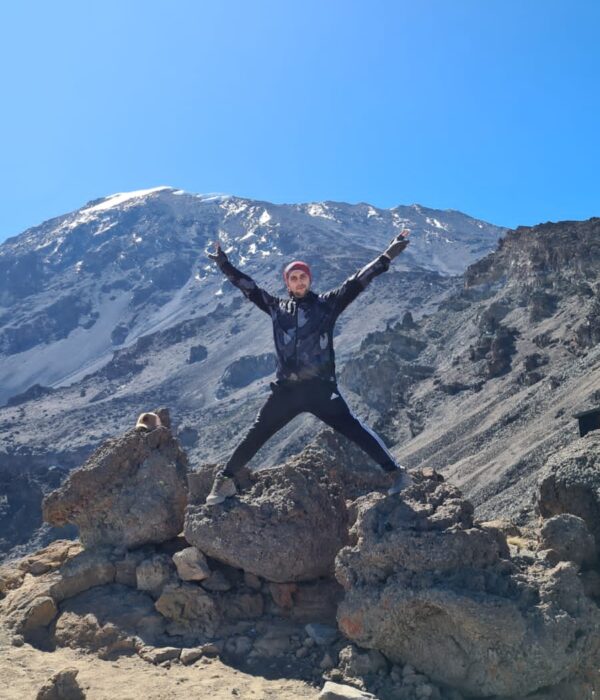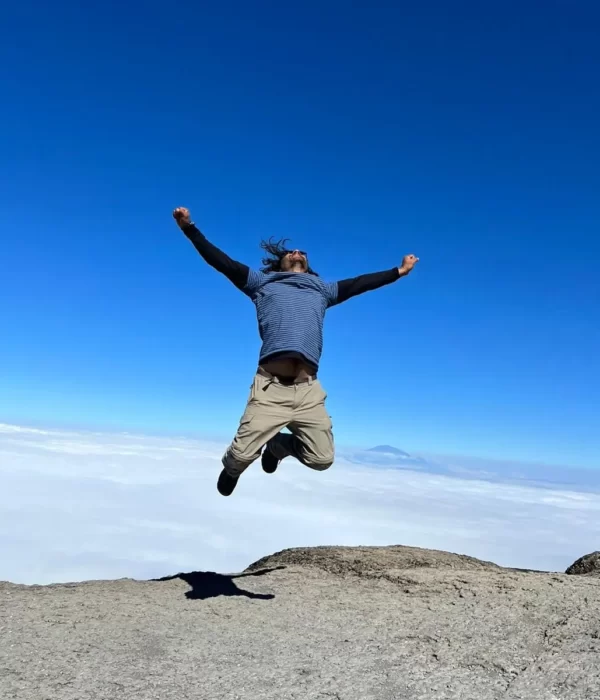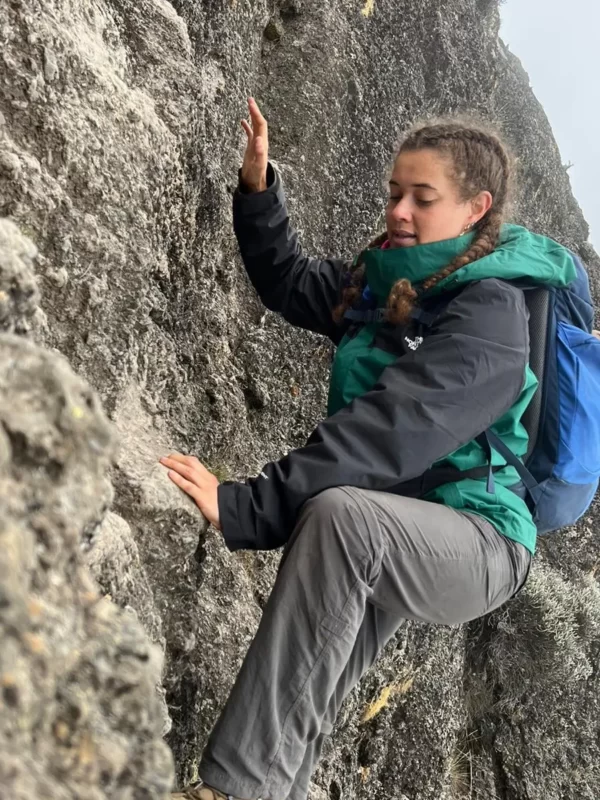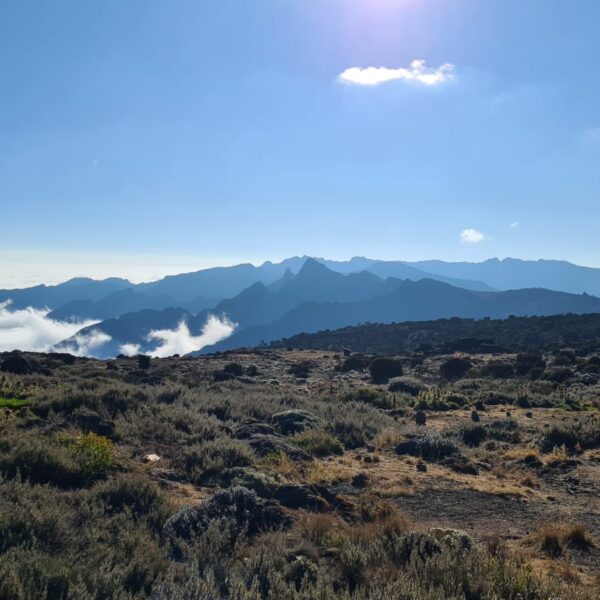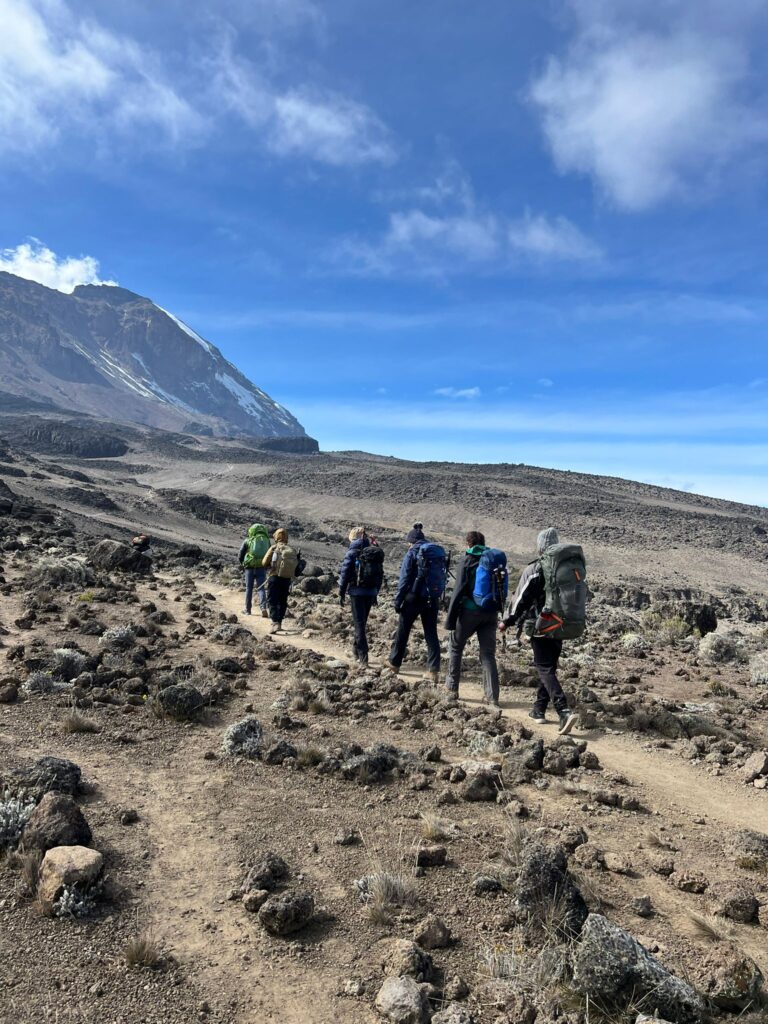Prehistoric Senecio Trees, Plants, Flowers & Grass
There are various distinctive flowers, trees, grass and moss that grow throughout Mount Kilimanjaro, which can be attributed to the mountain’s 5 ecological zones. These 5 ecosystems are due to the mountain’s height and proximity to the equator and the Indian Ocean. This is why the variations in climate, solar radiation and temperatures are strongly reflected in the plants’ unique structures. Its biodiversity is one of the reasons many flock to hike this mountain, especially the Marangu route on Kilimanjaro. Unlike the Lemosho vs Machame route, the forest of Kilimanjaro Kilimanjaro National Park present on the Marangu route is very minimal but the route more than makes up for it with its beautiful flowers such as the Impatiens pseudoviola. (1) Nevertheless, you’ll need to know how to prepare for Kilimanjaro because Marangu is one of the toughest trails on the mountain, particularly when ascending with your Kilimanjaro tour guide on the Western Breach route on Kilimanjaro.
What Plants Live On Top Of Mount Kilimanjaro?
- Kilimanjaro’s Flowers — Stoebe Kilimandscharica, Hebenstretia Dentata and Fireball Lily are primarily found on the mountain gladiolus, otherwise known as the forest zone/cultivation zone (800-2,800m). Given the amount of rainfall both these zones receive, this is where the mountain’s fauna and flora thrive.
- Kilimanjaro’s Trees — Dendrosenecio Kilimanjari & Lobelia Deckenii grow at 2,800-4,000m on Mount Kilimanjaro. This is Kilimanjaro’s Heath and Moorland or, otherwise known as the Alpine Zone, where temperatures drop below 0°C and precipitation is rather misty. The harsh weather conditions is the reason the zone is primarily dominated by trees and wildflowers such as Protea kilimandscharica and Kniphofia Thomsonii (Red-Hot Poker).
- Kilimanjaro’s Grass — You’ll also come across Tussoc Grass and Helichrysum meyeri-johannis (Everlasting Flowers) by the time you reach Kilimanjaro’s Alpine desert, at 4,000-5,000m. Here you’ll discover Kilimanjaro’s flora disappear due to poor weather conditions. The area has low precipitation, intense sun, extreme cold and often plants have to cope with drought conditions.
- Kilimanjaro’s Moss — Usnea Lichens (Old Man’s Beard) are the only tough plant species that can be found on the snowy wastes, near the summit (5,000m-5,895m). Thats because on the rare occasions that precipitation occurs, in the Arctic Zone, most of the moisture instantly disappears. It either dribbles away into the porous rock or is locked away in the glaciers. Other plant species that also grow over here are Helichrysum meyeri-johannis (Everlasting Flowers).
1. Dendrosenecio Kilimanjari (Giant Groundsels)

Dendrosenecio Kilimanjari, otherwise known as Senecio Trees, are giant groundsels that only grow on Mount Kilimanjaro and cannot be found anywhere else in the world. Even though these giant prehistoric plants are not the tallest trees on top of the mountain, they are certainly unique in their own right. Dendrosenecio Kilimanjari can be located between the mid-altitudes of Shira Plateau and the Barranco Camp. Although these endemic plants can reach heights of up 20 feet tall, they’re known to grow rather slowly. (2)
2. Lobelia Deckenii

Lobelia deckenii is a massive lobelia found only in the high mountains of East Africa, at elevations ranging from 3,600 to 4,600 meters (12,000 to 15,000 feet). (3) The lobelia grow up to 10 feet high, have hollow stems, and tall flower-like spikes.
3. Stoebe Kilimandscharica

Stoebe is an African plant genus in the daisy family. (4) The slender, wiry branches of the shrub are covered with small leaves that are pressed to the stem. The flower heads grow at the tips of the main shoots.
4. Protea Kilimandscharica

On Mount Kilimanjaro, Protea kilimandscharica can be found in the heath ecological zone. (5) Proteas are named after the Greek god Proteus, son of Poseidon, who had the ability to transform into a variety of shapes. These plants are well-known for their delicate flowers with unusual shapes.
5. Hebenstretia Dentata

Hebenstretia dentana is a summer perennial that produces masses of small white flowers. (6) This perennial, also known as the “white flowering plant,” grows in bushy clumps up to two feet tall.
6. Kniphofia Thomsonii

The Kniphofia Thomsonii, commonly known as the red hot poker, is a bright and dramatic plant that belong to the liliaceae family. (7) They are vivid orange and yellow in hue, simulating flaming hot metal taken from a forge.
7. Fireball Lily

The brightly colored plant is also known as the African Blood Lily. (8) The spectacular flowerhead is a large spherical mass that can grow to be 9 inches wide and contains up to 200 tiny florets. The extract from its bulbs is toxic and is used to manufacture poisonous arrow tips.
8. Tussock

Tussock grasses are a type of grass that grow as individual plants in clusters rather than as a sod or lawn. (9) They have long roots that can reach deep into the soil and can obtain more moisture during droughts than other grasses and plants. Mount Kilimanjaro’s tussock grasses provide habitat and food for insects, Kilimanjaro birds, and small animals.
9. Usnea Lichens (Old Man’s Beard)

Usnea is a genus of pale grayish-green lichens that grow on host tree bark or twigs. (10) Usnea’s plant body is used to make medicine for weight loss, pain, fever, and wound healing.
10. Helichrysum Meyeri-Johannis (Everlasting Flowers)

Helichrysum Meyeri-Johannis grow abundantly on Kilimanjaro at elevations ranging from 2,400 to 4,600 meters (8,000 to 15,000 feet). (11) They are referred to as everlasting flowers because they can bloom all year. This herbaceous perennial grows in clumps and can reach a height of nearly two feet.

